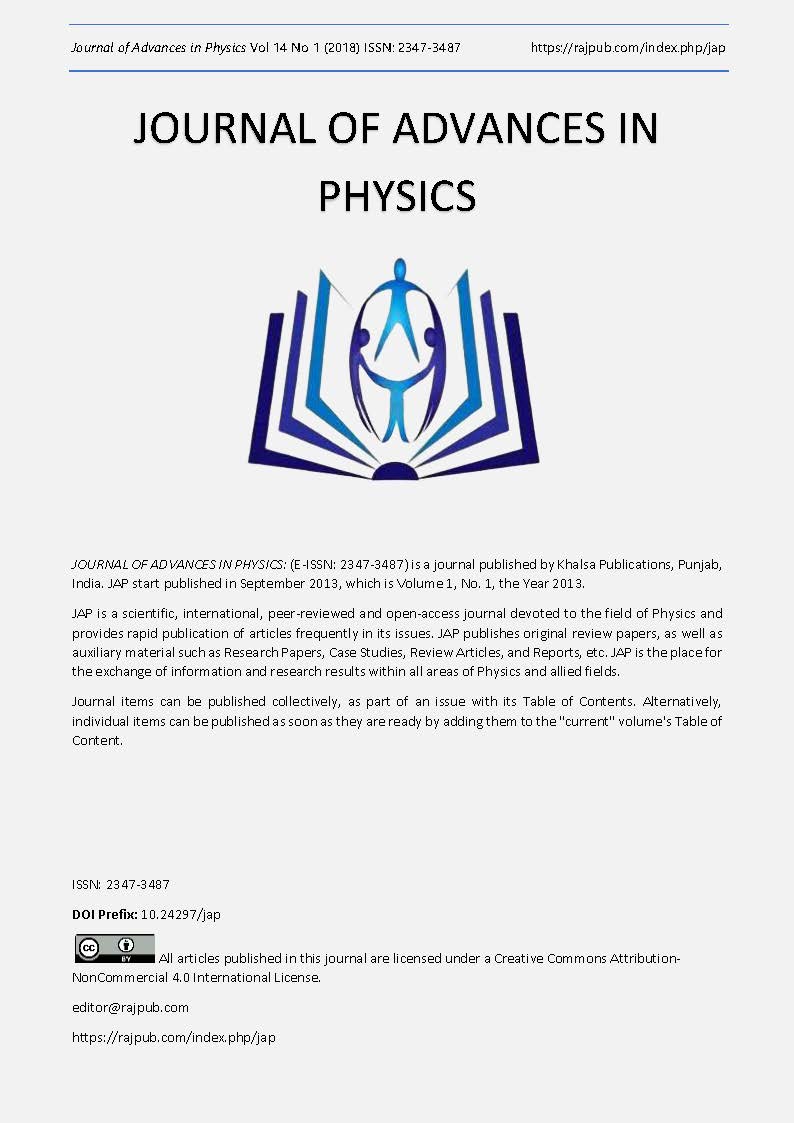The Nature of Time - A 21st Century View
DOI:
https://doi.org/10.24297/jap.v14i1.6736Keywords:
Absolute Time, Big Bang, Frame of Reference, Lorentz Transformation, Now, Photons, Spacetime, Special Relativity, Time, Time DilationAbstract
- This article is a logical analysis of historical records and reaches conclusions that are original.
- Prior to 1905 it was generally believed that the universe had always existed. The exact age of Earth was not known.
- The luminiferous æther theory explained how light was able to propagate through empty space.
- In 1930 Alfred Korzybski published his book “Science and Sanity”. In it he originated his aphorism —The Map is not the Territory.
- Reality consists of physical reality — the territory— and observed reality — the map.
- The Rossi-Hall experiment demonstrated that time dilation occurs physically and cannot be observed directly.
- The universe came into existence when the big bang occurred.
- When photons came into being, time came into being.
- All mechanisms for measuring time experience time dilation.
- The big bang caused major changes to science’s understanding of the nature of the universe.
- The speed of a photon through space equals a Planck length divided by a Planck time.
- We don’t really measure time, what we measure is the effect that time has on the instruments used to measure time.
- Everything; in Relative Time is based on observers. If you remove all references to observers from either Special Relativity or Spacetime there is almost nothing left.
- When the concepts of relative time were originated, no thought was given to the possibility that time might consist of both observed time and physical time.
- Photons — and the resulting time — came into existence with the big bang
- The movement of photons thru spacetime constitutes absolute time
- Without events, nothing happens.
- Every event has a frame of reference.
- ‘Now’ can occur in physical time and in observed time.
- A physical event always results in a physical ‘now’.
- Every event must have a frame of reference.
- Objects that move through space experience time dilation but they do not observe it.
- The observation of each observer is unique for that observer and need not be the same as either the actual event itself or the observation of another observer.
- Each observer has his/her own observed ‘now’ which occurs in observer’s frame of reference.
- The duration of an observation has no direct relationship to the duration of the event nor need it have the same duration as that of another observer.
- Each observer has her/his own frame of reference.
- Time dilation is an aspect of physical time, not of observed time.
- Observers have no way of knowing that they are experiencing time dilation.
- The Lorentz transformation factor ‘?’ is computed by dividing ‘v2’ which is a vector by ‘c2’ which is scalar. Both terms should be scalar.
- Both ‘v’ and ‘c’ use clocks to determine their value and all clocks are subject to time dilation.
- The Lorentz transaction is supposed to measure ‘?’ but ‘?’ is an element of the calculation!
Downloads
References
Boyle, Robert.; (1954). “The Metaphysical Fondations of Modern Science”. Doubleday & Company
Michelson, Albert A., Morley, Edward W. (1887). “On the Relative Motion of the Earth and the Luminiferous Ether”. American Journal of Science. 34: 333-345
Lightman, Alan; (2006). “The Discoveries”, Vintage Books: Pg 72
Lodge, Oliver; (2008). “The Ether of Space” Address to the Royal Institution, 21 February 1908.
Fresnel, A. (1918). Annales de chimie et de Physique 9; 57-66
Lorentz, Hendrik Antoon, (1910). The Principle of Relativity
MinkoskI, Hermann. “Space and Time”, Minkowski Institute Press
Baggott, Jim. (2013). The Quantum Story; A History in 40 Moments, Oxford University Press
Korzybski, Alfred. (1994). Science and Sanity: An Introduction to Non-Aristotelian Systems and General Semantics, 5th edition
Rossi, B.; HallR, D. B. (1941). "Variation of the Rate of Decay of Mesotrons with Momentum". Physical Review. 59 (3): 223–228
Wright, E.L. (9 May 2009). “What is the evidence for the Big Bang” UCLA Division of Astronomy and Astrophysics
Singh, Simon (2005). Big Bang: The Origin of the Universe. Harper Perennial. p. 560.
Lemaître G. (April 1927). "Un Univers homogène de masse constante et de rayon croissant rendant compte de la vitesse radiale des nébuleuses extra-galactiques" .Annales de la Société Scientifique de Bruxelle 47: 49. Bibcode:1927ASSB
Wilson, R. W.; Penzias, A. A. (1967). "Isotropy of Cosmic Background Radiation at 4080 Megahertz". Science. 156 (3778): 1100–1101
Kostro, L. (2001), "Albert Einstein's New Ether and his General Relativity" (PDF), Proceedings of the Conference of Applied Differential Geometry: 78–86
Hafele, J. C.; Keating, R. E. (July 14, 1972). "Around-the-World Atomic Clocks: Predicted Relativistic Time Gains". Science. 177
"Age of the Earth". U.S. Geological Survey. 1997. Archived from the original on 23 December 2005.
Self, Sydney B. “A Logical Examination of the Nature of Time”. Physics Essays 29,2 (2016)
Downloads
Published
How to Cite
Issue
Section
License
 All articles published in Journal of Advances in Linguistics are licensed under a Creative Commons Attribution 4.0 International License.
All articles published in Journal of Advances in Linguistics are licensed under a Creative Commons Attribution 4.0 International License.




